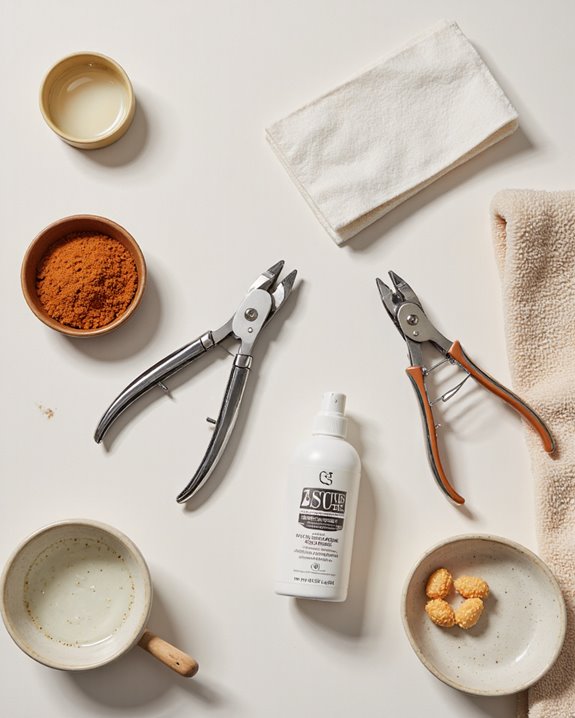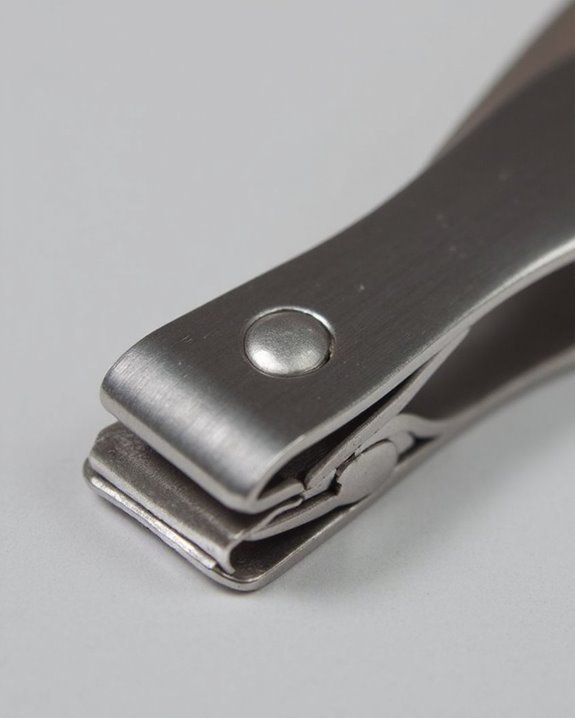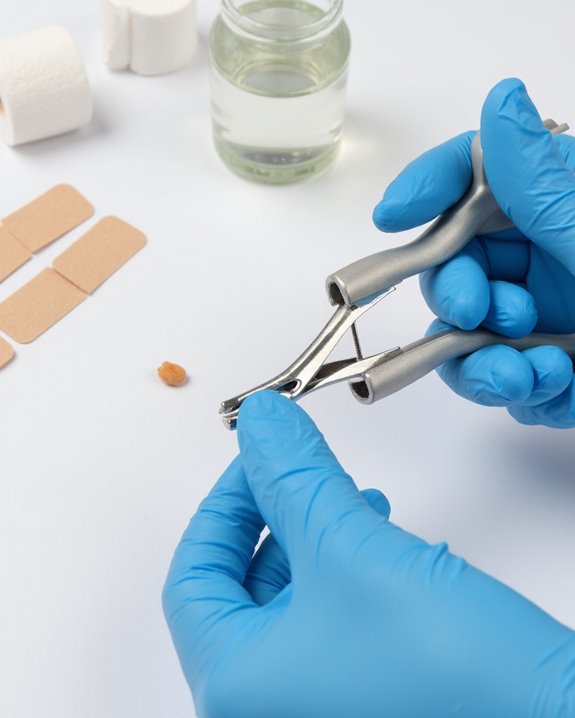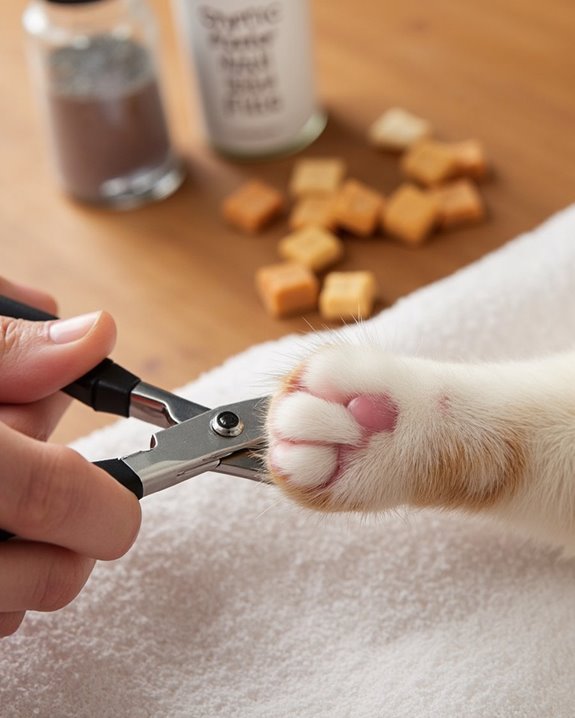To use dog nail clippers effectively, follow three simple steps: First, position your dog in a standing position with your knee beneath their paw for stability and control. Second, identify the quick (pink area in white nails) and trim only small amounts beyond it, making conservative cuts. Third, have styptic powder or cornstarch ready to address any bleeding that may occur. Following these techniques guarantees a safer, more comfortable nail trimming experience for both handler and pet.
Key Takeaways
- Position your dog in a standing position with your knee beneath their paw for stability.
- Hold the clipper perpendicular to the nail and trim small amounts to avoid the quick.
- Examine the nail after each cut to identify the quick, which appears pink in white nails.
- Apply styptic powder or cornstarch immediately if bleeding occurs during trimming.
- Maintain a regular trimming schedule with conservative cuts every two weeks for best results.
Securing Your Dog in the Proper Position
The correct positioning of a dog during nail trimming forms the foundation for a safe and effective grooming session. Veterinary experts recommend maintaining a standing position rather than having the dog lie down, as this approach greatly reduces anxiety while providing the groomer with ideal control. This standing position creates a more natural stance for the dog, promoting calmness throughout the procedure.
To implement proper knee stabilization, place your knee directly beneath the dog’s paw, creating a stable platform that prevents unexpected movements during clipping. This technique enhances precision by securing the paw firmly without causing discomfort. The standing method offers two primary advantages: it minimizes the risk of paw slippage that could result in accidental cuts, and it allows the handler to maintain visual contact with the dog, reinforcing a sense of security throughout the nail trimming process. Additionally, choosing a proper nail trimming position ensures a smoother and safer grooming experience for both pet and owner.
Identifying the Quick and Making Safe Cuts

With proper positioning established, accurate identification of the quick becomes the next priority in successful nail trimming. For dogs with white nails, the quick appears as a pink area within the nail, providing a visible guideline for Safe Trimming. This pink section contains blood vessels and nerves that, when cut, cause pain and bleeding.
Effective Quick Spotting involves trimming only the tip of the nail beyond the quick, making small, conservative cuts every two weeks. Groomers should examine the nail after each minor cut to confirm they remain at a safe distance from the quick. This methodical approach minimizes trauma, as dogs typically remember painful trimming experiences. Regular maintenance with minimal amounts removed is preferable to infrequent, aggressive trims that risk quick damage, ensuring both effective nail care and continued cooperation from the dog.
Managing Bleeding and Aftercare

Despite taking precautions, accidental cuts to a dog’s quick may occur during nail trimming, requiring immediate intervention to manage bleeding and prevent distress. For effective Styptic Application, professionals recommend using quick stop powder or cornstarch applied with a 1 ml syringe for precision targeting of the bleeding site. Styptic gel in bottles proves more economical than single-use applicators, allowing for multiple applications during the aftercare process.
Wound Monitoring constitutes a critical component of post-trimming care, with pet owners needing to observe the affected paw for signs of pain or infection. Maintaining cleanliness around the trimmed nail promotes proper healing. To prevent future incidents, subsequent nail trimming sessions should remove only small increments of nail, reducing the risk of cutting the quick and necessitating additional aftercare measures.
Frequently Asked Questions
How to Use Dog Nail Clippers Properly?
Proper dog nail trimming requires using safety clippers with shields, understanding breed-specific nail characteristics, and regular clipper maintenance. Position dogs standing, identify the quick, and trim incrementally to maintain healthy, short nails safely.
How to Clip Dog Nails for Beginners?
Like facing a mountain, beginners can overcome nail-clipping fear through proper technique. Fear management involves using safety clippers, positioning correctly, and identifying the quick. Establish routine tips with bi-weekly sessions, cutting small increments gradually.
How Do You Use a Nail Cutter Step by Step?
Using nail cutters requires safety precautions like selecting shielded clippers and identifying the quick. Position the dog steadily, trim in small increments, and maintain regular sessions for gradual shortening to prevent over-cutting and bleeding.
How to Use Dog Clippers for the First Time?
Like a gardener choosing pruning shears for a prized rosebush, overcoming First Time Anxiety begins with proper Clipper Selection. Choose safety clippers with shields, position dog comfortably, identify the quick, and trim small amounts gradually.




